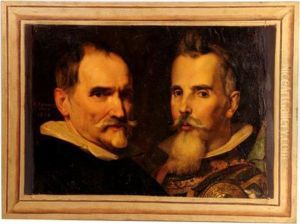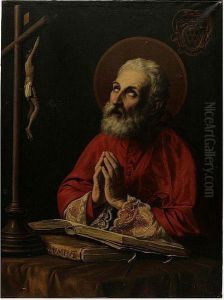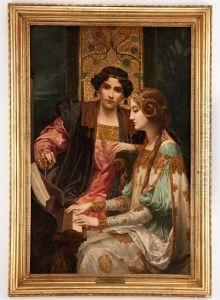P. Gonzalo Carrasco Espinosa Paintings
P. Gonzalo Carrasco Espinosa was a notable Mexican Jesuit priest and artist, born on February 22, 1859, in Otumba, State of Mexico. His life spanned a period of significant political and cultural turmoil in Mexico, including the Reform War, the French Intervention, and the Mexican Revolution. Despite these tumultuous times, Carrasco managed to leave an indelible mark on Mexican art, particularly in the realm of religious and mural painting.
Carrasco's artistic journey began at the Academia de San Carlos in Mexico City, where he was initially trained in the classical European style of painting. However, his career took a significant turn when he joined the Society of Jesus in 1887, which led him to focus more on religious subjects. Despite his religious commitment, Carrasco's style was deeply influenced by the social realities of Mexico, and he often incorporated indigenous and popular themes into his work, making his artistry uniquely Mexican.
Throughout his career, P. Gonzalo Carrasco Espinosa was involved in several important projects. He is perhaps best known for his work in the Jesuit college of San Ildefonso in Mexico City, where his murals depict the intellectual and spiritual virtues in a style that, while reflective of European influences, is deeply imbued with Mexican character. His work not only graced the walls of churches and religious institutions but also appeared in secular venues, reflecting his adaptability and the broad appeal of his art.
Carrasco's contributions to Mexican art were not limited to his paintings. He was also an educator, imparting his knowledge and skills to a new generation of artists. His legacy is one of bridging the gap between traditional European techniques and the emerging Mexican identity in art, which was gaining momentum with the Mexican Muralism movement that followed his death.
P. Gonzalo Carrasco Espinosa passed away on February 27, 1936, in Puebla, leaving behind a rich body of work that continues to be studied and admired. His life and art remain a testament to the power of integrating cultural identity with classical forms, making him a pivotal figure in the history of Mexican art.


